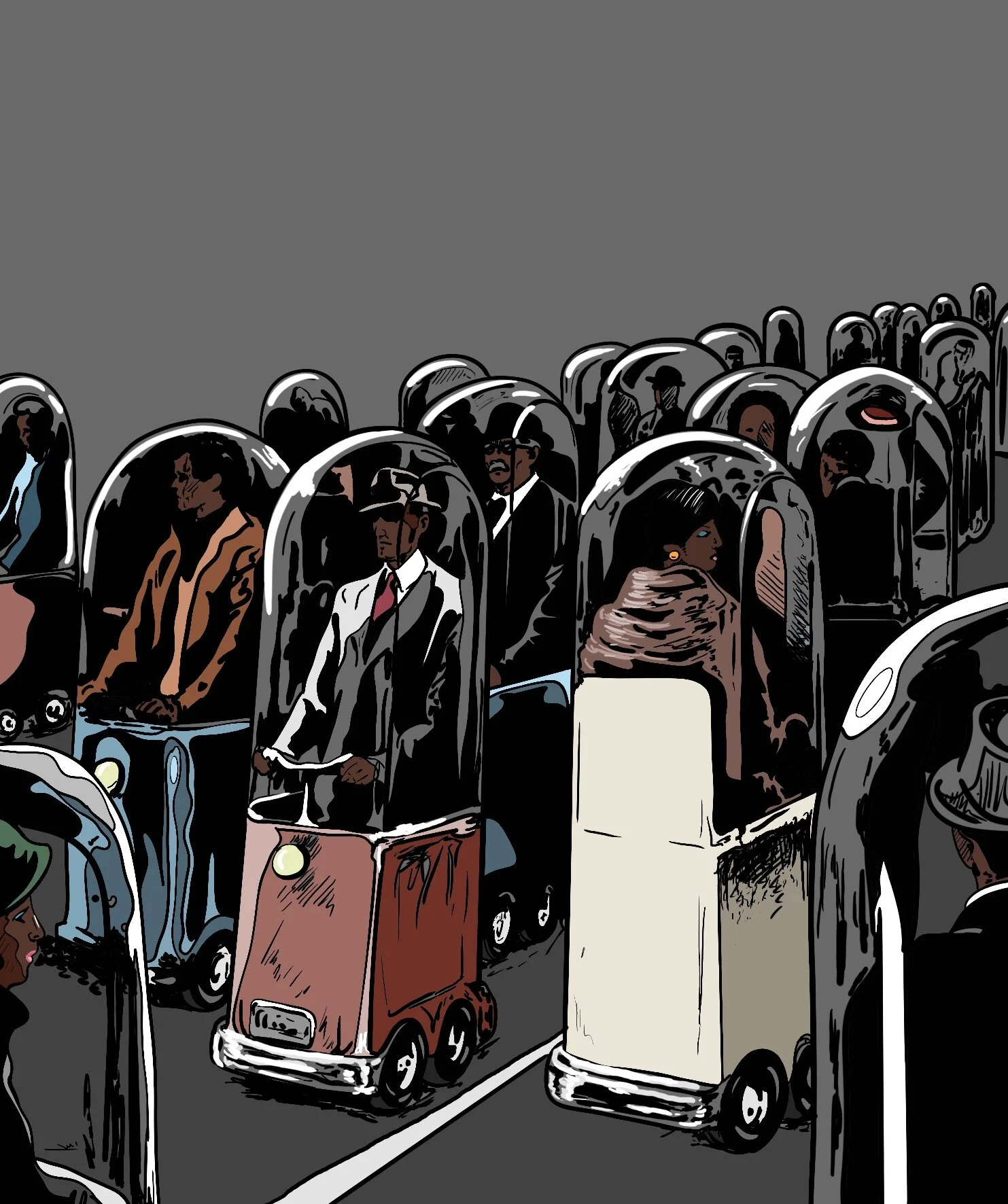The Evolution of Easy
Illustration by Ayo Arogunmati
A picture was sent to me through one of the more popular communication mediums. It was a picture of my niece. In the photo, she, being only 8 months old, was standing up. A few months prior to receiving the photo, she was learning to crawl, and before that she was attempting to roll off her back. The next step, then, is to take her first step and attempt to walk. The revolution of walking is a slow evolving process, and we recognize and witness the previous steps to get to the stage of walking, so we cheer and applaud when a young child proceeds to the final stage of development.
Peter Theil, venture capitalist, states that technology will define the future of the world. For example, the future of transportation will be dominated by self-driving vehicles and if we think about the evolution of transportation by road, then it makes sense that the last step for a car is for it to drive itself.
So we have the following vertical of movement evolution for humans according to Seth Godin:
Cruise control
Driving
Cycling
Walking
Each step, in ascending order, is progressively more difficult than the next step. Each step prior takes a bit more work to achieve.
So why is this important? – In art, the work and I mean real hard work and emotional pain to think of new ideas and bring them to life is missing because of technology.
We, humans, have progressed from walking to cycling to driving and to cruise control, but our need for art that embeds hard work is what we want and what we long for as consumers of the good.
In short, technology has allowed us to work less in the area of art, and the ease of input has allowed for the crowding out of artists that do real hard work on their outputs.
So when an artist sits to do his or her writing, the work to come up with the ideas is not any less, but the work to document the thoughts has been made easier.
The manuscript used to be a work produced by hand in the case of a writer, but now includes type written documents. This has made it easier to document our ideas, but yet the hand written work holds a gravitas that is not bestowed upon other forms of manuscripts.
David Rubenstein, private equity investor, purchased the original manuscript of the Magna Carta and decided to lend out the copy to the Smithsonian. This was completed by hand and thus holds more weight next to other forms of documents that have been infused with the technology of the day.
The importance of technology is not lost on me because of the democratization, but I do think the quick turnover, whereby we miss the steps required to the final composition, causes us have an inherent distrust of the value. So, we should preserve the work of artists in the most original and most difficult form of composition to maintain the value.
Artists, and more specifically African artists, should not eliminate the idea of the old school form manuscript from their compositions. There is a need to preserve the hard work in its most difficult form, so that value can attribute to the act over time based on the inked paper.
The use of voice is the next phase of composition, whereby writing and typing will be displaced for an easier process of composition. Many artists champion their ability to avoid the use of the pen and pad to document their work, but may find that voice will erode the truth about their composition if not documented in the difficult forms.
Writing is still a very important component of the creative process. So, let me see the rough drafts, all 100 or more different versions of the work in ink, and the final form copy of the record, fiction, and non-fiction. For this will recognize the revolution of the completed work, but not dismiss the evolution of the work to get there.


